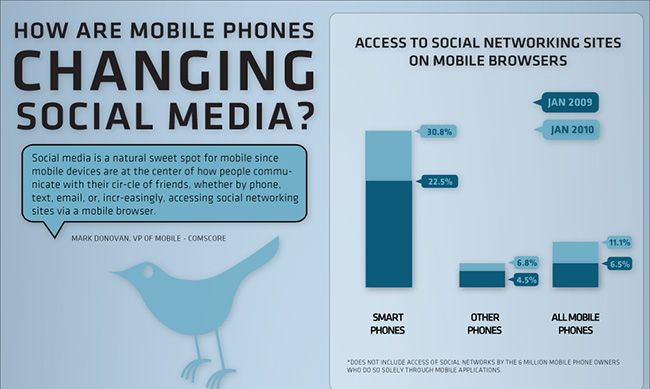Mobile marketing: A Jungle survival guide
What is mobile marketing?
It’s a massive, ever-evolving digital marketing phenomenon, growing at breakneck speed. There are now an estimated 11 million smartphone users in the UK alone.
Even without taking all the tablet users into account, that’s a huge audience – with a mammoth reach.
Think about it, people carry their phones with them everywhere, day and night. In fact, research shows that searches from mobiles are at their highest in the evenings, just when desktop search traffic starts to slow down.
And, as the evenings are the peak conversion time for many businesses, this means your creative, persuasive online mobile ad campaign will be reaching your customers at the optimum time.
Market size/Industry trends
A recent Ofcom report stated that, currently in the UK, 27% of all adults and 47% of teenagers now carry a smartphone – with 59% of them saying that they purchased their first one within the last twelve months.
Another major trend is the growth in tablet usage, and it’s estimated that, at current growth rates, smartphones and tablets will account for over 25% of online traffic by the end of 2012.
According to Global Mobile Statistics 2011 from MobiThinking, 1 in 7 searches are now conducted by mobile. And Google tells us that around 50% of mobile searches lead to purchase.
Mobile and tablet use are also changing the face of social media (if your digital marketing strategy doesn’t include social, it should). The following infographic, courtesy of Flowtown.com, gives you the low-down on just how much.

Advantages of mobile marketing
Huge audience, mammoth reach, optimum timing – mobile advertising can’t fail. Also, ads are usually displayed across the entire screen, one per page – so stand out is guaranteed and ad blindness all but eliminated.
It’s a personalised, relevant advertising channel that allows you to recognise when your existing online customers are using their mobile device and change your proposition accordingly. You can also utilise digital strategies such as:
Online mobile advertising: You can have your ads appear on web pages, games and apps aimed at your target demographic. Plus, many mobile sites, videos and apps will make a customer view an ad before they can play a game, giving you the visitors’ undivided attention.
Geo-targeting: You can target mobile users geographically. So, say you have a retail outlet at a particular shopping centre, you can have your advert appear on the phones of customers based within that shopping centre and even offer them discounts based on the production of the ad on their phone.
Mobile shopping: Increased mobile capability means more and more people do their online shopping via their phone. Customers who see and like your product in an ad are increasingly likely to use your online checkout on their phone, making the purchase there and then.
Local searches: A massive 90% of online mobile searches are carried out to find local information. For instance, you’re away on business, you fancy a Chinese but haven’t the foggiest where the nearest restaurant is. So, out comes the phone and you search for Chinese restaurants in the local area and view the results. Up pops an ad for a Chinese restaurant just around the corner – our bet is they’ve got your business.
Disadvantages of mobile marketing
If you don’t have a mobile-optimised website, then basically you’re wasting your time. Mobile users hate nothing more than having to pinch, zoom in and scroll in order to read a full desktop site on their smaller mobile screen. In fact, a recent Internet Advertising Bureau (IAB) study revealed that if a retailer’s website didn’t work on their mobile, 20% of customers would go elsewhere to buy and 8% wouldn’t bother. That’s a massive loss in potential business.
Glossary
We thought this bite-sized glossary of keywords and phrases might prove useful.
- Android:
- An operating system for mobile devices such as smartphones and tablets that allows the use of apps to extend functionality.
- Apps:
- Short for mobile applications, apps are software applications that allow access to or add information to a digital device.
- Augmented reality:
- Also referred to as AR, this is the integration of digital information with live video of the user’s environment in real time.
- Geo targeting:
- A practice of aiming advertisements for products and services at specific markets based on the physical locations of the potential buyers.
- Hyperlocal:
- Media or advertising focused on a specific location or area targeted by postcode.
- iOS:
- Once known as iPhone OS, this is Apple’s mobile operating system.
- QR Code:
- An acronym for Quick Response Codes, a type of two-dimensional barcode that can be read using smartphones, linking the user directly to text, emails, websites, phone numbers etc.
- Smartphone:
- A mobile phone with advanced computing ability and connectivity, usually touch screen with media player, digital camera and GPS system.
- SMS:
- An acronym for Short Message Service also referred to as texting.
- Tablet:
- A mobile computer, much smaller than a laptop, with a touchscreen or pen-enabled interface.
Useful links
http://www.mobilemarketingwatch.com
http://www.mobilemarketer.com
http://www.mmaglobal.com
http://www.guardian.co.uk/mobile-marketing
